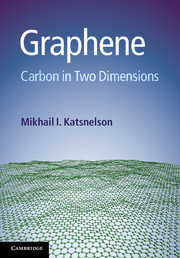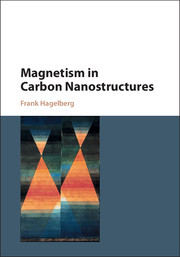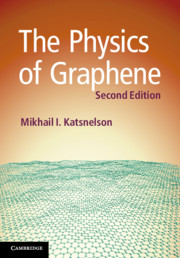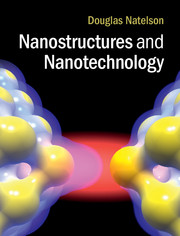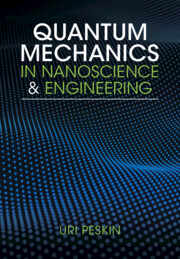Graphene
Graphene is the thinnest known material, a sheet of carbon atoms arranged in hexagonal cells a single atom thick, and yet stronger than diamond. It has potentially significant applications in nanotechnology, 'beyond-silicon' electronics, solid-state realization of high-energy phenomena and as a prototype membrane which could revolutionise soft matter and 2D physics. In this book, leading graphene research theorist Mikhail Katsnelson presents the basic concepts of graphene physics. Topics covered include Berry phase, topologically protected zero modes, Klein tunneling, vacuum reconstruction near supercritical charges, and deformation-induced gauge fields. The book also introduces the theory of flexible membranes relevant to graphene physics and discusses electronic transport, optical properties, magnetism and spintronics. Standard undergraduate-level knowledge of quantum and statistical physics and solid state theory is assumed. This is an important textbook for graduate students in nanoscience and nanotechnology and an excellent introduction for physicists and materials science researchers working in related areas.
- The most comprehensive book available on graphene, one of the hottest subjects in modern science
- The connections of graphene physics with fundamental physics (relativistic quantum mechanics, field theory, basic statistical mechanics) are emphasized and explained in detail, providing understanding of the basic theoretical physics
- Topics are carefully selected, providing a concise introduction sufficient to fluently read research literature and to start new research work in the field
Reviews & endorsements
'… the first of its kind for the field of graphene, and a very successful book. Starting from the basics, at student level, it guides the reader to the most important results in the field of graphene physics to date … This book is not only a brilliant systematic overview of the state-of-the-art in graphene research to date; it also offers a program of research for the next few years.' Dr Kostya Novoselov, University of Manchester, co-recipient (together with Professor A. Geim) of the 2010 Nobel Prize in Physics
'Katsnelson has himself contributed many important theoretical publications to this subject area from the very beginning of this booming field. The present book deals with the fundamentals which will not be modified as quickly as the possible applications … the reader will benefit from an extensive list of references and a comprehensive index. The whole book is well produced, with carefully chosen figures … At the bottom line, the book can be recommended to students interested in the physical fundamentals of the phenomenon of graphene. Unlike three-dimensional materials science, theory is ahead of experiment in many aspects of exploring physical and chemical properties. Hence researchers who want to get suggestions for further projects can also take advantage of having a copy of Graphene at hand.' Peter Paufler, Journal of Applied Crystallography
Product details
May 2012Adobe eBook Reader
9781139368094
0 pages
0kg
101 b/w illus.
This ISBN is for an eBook version which is distributed on our behalf by a third party.
Table of Contents
- Preface
- 1. Electronic structure of ideal graphene
- 2. Electron states in magnetic fields
- 3. Quantum transport via evanescent waves
- 4. Klein paradox and chiral tunneling
- 5. Edges, nanoribbons and quantum dots
- 6. Point defects
- 7. Optics and response functions
- 8. Coulomb problem
- 9. Crystal lattice dynamics and thermodynamics
- 10. Gauge fields and strain engineering
- 11. Scattering mechanisms and transport properties
- 12. Spin effects and magnetism
- References
- Index.

